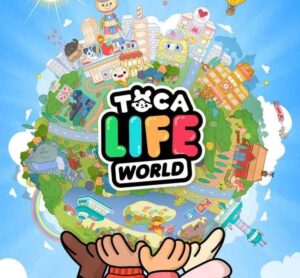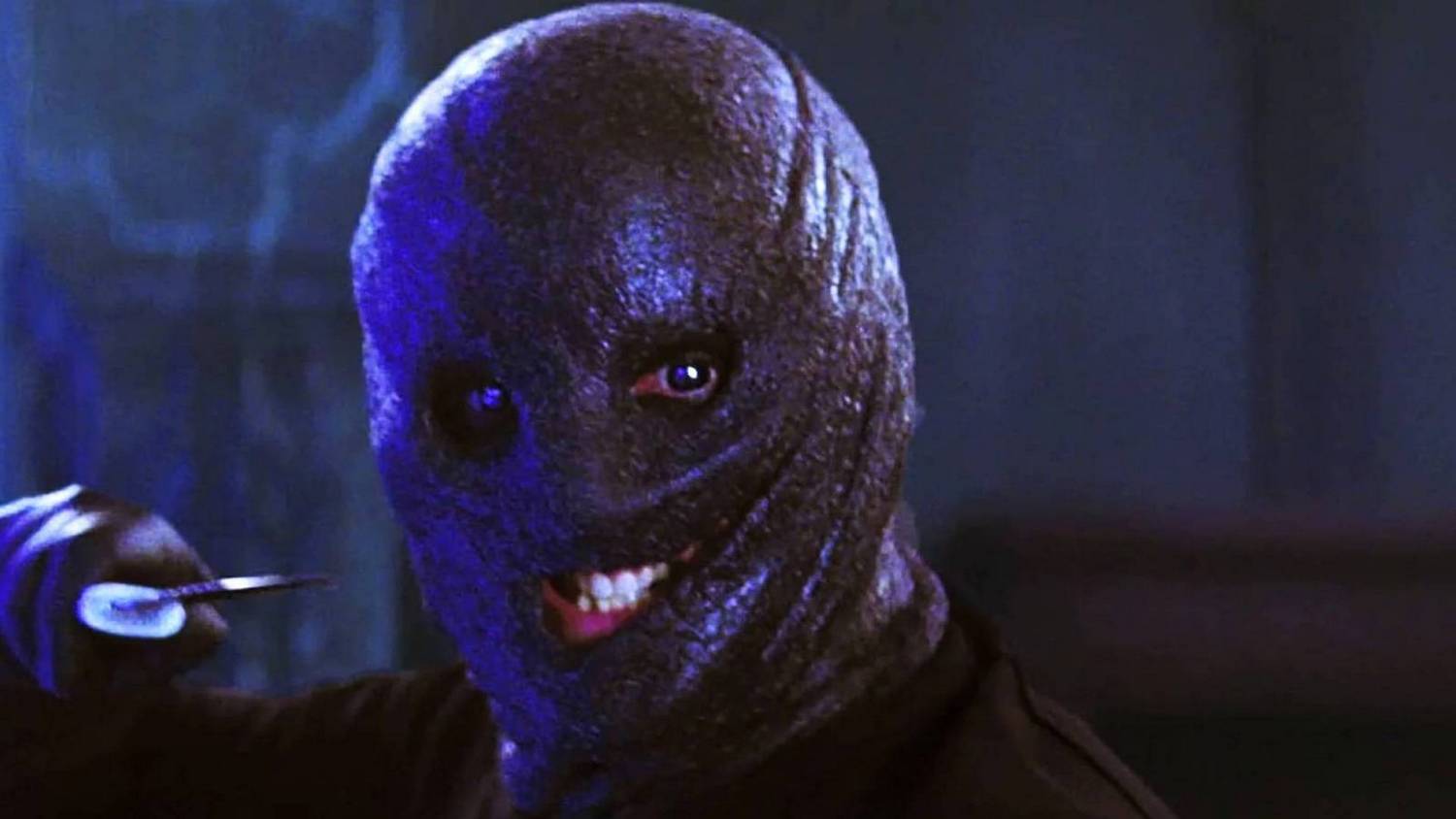The Underrated Horror Hit That Was Nearly Jigsaw’s Origin Story: An Investigative Look at The Collector (2009)
Popular Now
 EA SPORT FC 25
EA SPORT FC 25
 R.E.P.O
R.E.P.O
 Brawl Stars
Brawl Stars
 Among Us
Among Us
 Poppy Playtime
Poppy Playtime
 Sonic the Hedgehog™ Classic
Sonic the Hedgehog™ Classic
 CarX Street
CarX Street
 BeamNG.drive
BeamNG.drive
 FIFA 23
FIFA 23
 God of War Ragnarök
God of War Ragnarök  In the vast and often-saturated world of modern serial killer movies and torture horror, certain films manage to carve out a dedicated niche, even if they don’t achieve the blockbuster status of their contemporaries. One such film is 2009’s The Collector. While celebrated by a cult following for its relentless pace and ingenious, deadly traps, a surprising piece of cinematic history often escapes mainstream discussion: the movie was originally conceived as a prequel to the wildly successful Saw franchise.
In the vast and often-saturated world of modern serial killer movies and torture horror, certain films manage to carve out a dedicated niche, even if they don’t achieve the blockbuster status of their contemporaries. One such film is 2009’s The Collector. While celebrated by a cult following for its relentless pace and ingenious, deadly traps, a surprising piece of cinematic history often escapes mainstream discussion: the movie was originally conceived as a prequel to the wildly successful Saw franchise.
This revelation is not mere fan speculation but a documented fact stemming from the film’s creative lineage. The screenplay for The Collector was penned by Marcus Dunstan and Patrick Melton—the very duo responsible for writing Saw IV, V, VI, and Saw 3D. Their initial concept, working under the provisional title of The Midnight Man, was a direct pitch to the producers of Saw as a way to explore the origin story of John Kramer, the notorious Jigsaw Killer. This deep-dive explores how this project transformed from a potential Saw prequel into one of the most brutal and underrated slasher films of the late 2000s.
The Genesis of a Trap Master: From Jigsaw Prequel to Original Nightmare
The early 21st century was dominated by the aesthetic of Jigsaw’s elaborate games. Following the monumental success of James Wan and Leigh Whannell’s original 2004 film, the sequels rapidly expanded the mythology, but also created a demand for fresh yet familiar content. Dunstan and Melton, having successfully navigated the convoluted timeline of the Saw universe, pitched an idea that would theoretically show a younger John Kramer or a proto-Jigsaw figure before he adopted the “Jigsaw” persona and his complex moralistic agenda. The film would focus on a man testing the limits of human will to survive using elaborate, physically devastating death traps.
The pitch, however, was ultimately rejected by the Saw producers as a canonical prequel. Instead of abandoning the script, Dunstan (who also directed the film) and Melton repurposed the core idea—a single, masked killer deploying intricate, homemade traps within a confined space—and developed it into an original story. This creative pivot allowed them to craft a villain with a completely different, and arguably more chilling, motive.
- Key Concept: The transition from a moralistic agenda (Jigsaw’s “tests”) to pure, sadistic collection (The Collector’s obsession).
- Creative Personnel: Screenwriters Marcus Dunstan & Patrick Melton, who successfully ran the Saw franchise’s later entries, helmed this new vision.
- Initial Title: The project was internally referred to as The Midnight Man before settling on The Collector.
 A Distinctly Different Breed of Killer: Motive and Methodology
A Distinctly Different Breed of Killer: Motive and Methodology
While the visual language of the traps in The Collector undoubtedly echoes the Rube Goldberg-esque mechanisms of the Saw series—a result of the writers’ immersion in that franchise—the motivations of the two killers diverge sharply. This is the crucial element that allowed The Collector to stand on its own as a unique horror franchise.
Jigsaw Killer (John Kramer): The Moralist
Jigsaw’s motivation is famously rooted in a twisted form of rehabilitation. His victims are people he deems ungrateful for their lives, and the traps are “games” designed to force them into a brutal choice that, if survived, would ostensibly lead to a spiritual awakening. The traps, while lethal, often have a path to survival, emphasizing a moral choice over mere torture.
The Collector: The Sadistic Hoarder
The titular Collector, by contrast, is a purer, more primal form of monster. His motives are not moralistic but obsessive and predatory. He is a home invasion horror villain who breaks into a house not to test its occupants’ will to live, but to select one victim—the “collector’s item”—to add to his morbid collection, killing everyone else in a chaotic, barbaric fashion. His traps are less about a fair chance and more about securing his hunting ground and inflicting maximum pain. The film is less a puzzle box and more a cat-and-mouse chase, which arguably makes it a more terrifying and realistic scenario for many viewers.
The protagonist, Arkin, an ex-con trying to rob the house, is forced into the unexpected role of a reluctant hero, a narrative structure that inverts the usual horror trope and ramps up the suspense.
Comparative Analysis of Villain Intent:
- Jigsaw: Moral teacher, offers a chance at redemption (a ‘way out’).
- The Collector: Sadistic predator, seeks a ‘trophy’ (no true ‘way out’ for most victims).
- Target: Jigsaw targets the “unworthy.” The Collector targets a specific house and family at random, making the choice arbitrary and terrifying.
The Film’s Critical Reception and Lasting Legacy
Upon its release, The Collector faced a challenging environment. It arrived squarely in the middle of the “torture porn” debate, a controversial subgenre label often applied to films like Saw and Hostel. This critical lens, alongside its undeniable low-budget B-movie aesthetic, led to a mixed initial reception and relatively modest box office success compared to the Saw juggernaut. It grossed just over $10 million worldwide on a reported $3 million budget, which, while profitable, didn’t create the immediate franchise momentum of its predecessor.
However, over the years, the film has undergone a significant re-evaluation, solidifying its status as an underrated horror gem. Critics and fans alike now praise:
- Tension and Pacing: The film is often lauded for its relentless, claustrophobic atmosphere and the effective use of a single-location setting.
- Ingenious Traps: While reminiscent of Jigsaw’s work, The Collector’s traps—designed with common household materials—are praised for their visceral, DIY realism.
- The Anti-Hero Protagonist: Josh Stewart’s performance as Arkin, a thief forced into heroism, provides a compelling, morally grey anchor for the story.
The film’s success led to a 2012 sequel, The Collection, which expanded the scope of the killer’s operation, further cementing the franchise as a distinct entity in the modern horror movie landscape. The intense focus on survival horror and high-stakes close-quarters combat offers a compelling alternative to the sprawling mythologies of franchises like Saw or Friday the 13th. The possibility of a third film, The Coll3cted, has been a topic of fervent discussion in recent years, demonstrating the ongoing appetite for this particularly vicious brand of thriller.
Conclusion: A Near Miss That Forged a New Monster
The story of The Collector is a fascinating case study in Hollywood’s development process. The film’s near-miss as a Saw prequel is precisely what enabled it to flourish as an original, brutal piece of horror cinema. By rejecting the moralizing philosophy of Jigsaw, Dunstan and Melton were free to create a killer whose motive is purely self-serving and terrifyingly simple: to collect. This simple, yet horrifying premise elevated the film beyond a mere imitator, establishing The Collector as a must-see for fans seeking visceral, intelligent, and truly high-stakes psychological horror. It’s a testament to the fact that sometimes, creative rejection can be the catalyst for the birth of a new, genuinely unforgettable monster.
Fans looking for a dark, violent, and suspenseful serial killer movie should track down this title immediately, understanding that the DNA of Saw is present, but the heart of The Collector beats with a much colder, more purely evil rhythm.










 A Distinctly Different Breed of Killer: Motive and Methodology
A Distinctly Different Breed of Killer: Motive and Methodology